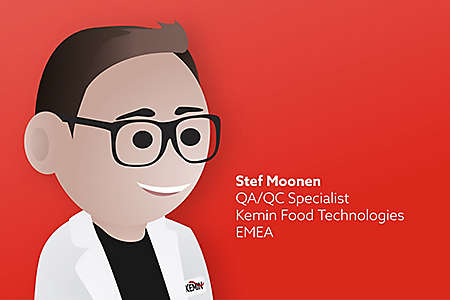28 May 2019 is World Hunger Day. We sat down to interview Mathieux Maillette de Buy Wenniger, Food Technologist at Kemin and Project Leader for the World Food Programme (WFP). Today, more than 800 million people in the world do not have enough food. Kemin has been a partner of WFP since 2004 and we continue our fight to put a stop to hunger, once and for all. In 2018, the Kemin partnership with WFP impacted 25 million lives.
Today is World Hunger Day. What are the biggest hunger challenges the world is facing right now?
Even though the world’s food production is sufficient for the entire population, over 800 million people continue to suffer from hunger. A big problem is that in developing countries, most of the food gets lost between the farm and the markets. On top of that, conflicts have a major impact on the accessibility of food markets and efficiency of supply chains. But most disturbing is that in developed countries, we waste about 30% of our food at the end of the food chain. Working towards a better distribution of food may be the most gargantuan challenge. But one way to do so is drawing attention to the matter with World Hunger Day. That’s an initiative of The Global Hunger Project, an NGO focusing on fighting hunger on a global scale.
A similar organisation and the one you work with, the World Food Programme (WFP), has a far-reaching approach to battle hunger.
First, we determine between two different kinds of hunger. On the one hand, there’s acute hunger after a major catastrophe event such as a natural disaster. On the other, there’s structural malnutrition due to diverse causes such as conflict, climate change, problems in the supply chain, and often, it’s a combination of both. The World Food Programme is part of the United Nations, tasked with fighting both types of hunger. They assist 91.4 million people in 83 countries.
What kind of support does WFP offer?
WFP’s Humanitarian aid for acute hunger aims to nourish people while in the meantime the supply chain and food markets can be restored. High Energy Biscuits are an example of the types of food that are used for this purpose. They can be distributed easily, but also have a relatively long shelf life. Food is stored in warehouses in strategic locations, to allow immediate distribution in case of a disaster such as in Yemen or Haiti. WFP also works on long-term projects to treat and prevent chronic malnutrition.





